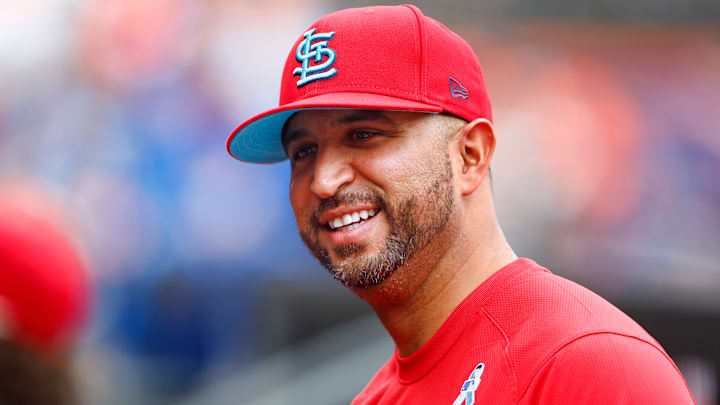The Case for Firing Marmol
The case against Marmol has to start with player relations. Last year, Marmol and Harrison Bader got into a spat or two throughout the season. This year, Marmol appeared to have an issue with Tyler O'Neill less than a week into the regular season. Marmol's handling of the Willson Contreras situation has also been less than stellar. To have three separate manager-player incidents in a little over a year is not a positive sign about a manager's ability to work with his players.
Oliver has also gotten into it with umpires a few times, particularly C.B. Bucknor. Say what you want about Buckner as an umpire and a person, but there comes a point when an issue must be let go. Bucknor should have shaken Marmol's hand before a Spring Training game, but Marmol did not need to question the character of Bucknor. To hold onto some bad calls in a game for as long as Marmol has doesn't speak well to his character.
A manager can't choose the players on the roster like the general manager can. What a manager can do is play those guys at the best time. Overuse of his best bullpen arms has been a consistent qualm fans have with Marmol (and every other manager who has ever existed). Ryan Helsley, Giovanny Gallegos, and Andre Pallante are used very heavily. While the best relievers on a team should be used the most, a lot of it depends on when they are used. For example, Ryan Helsley was used last year in 28 high-leverage situation, 17 middle-leverage situations, and 9 low-leverage situations for an Average Leverage Index of 1.595 (league average is 1). That is appropriate usage for a stud reliever, while one would hope that his low-leverage situations would be slightly lower, unless they were used to give him some innings in a large gap between save appearances.
On the other hand, Zack Thompson last year pitched in only 34 innings with a .981 WHIP and an ERA+ of 191. You would think that Thompson would have a leverage index score similar to Helsley's; he doesn't. His Average Leverage Index was .540 last year. He was primarily used in long-relief appearances, as he pitched in 11 multi-inning appearances. Meanwhile, pitchers like Jake Woodford (1.117 WHIP), Genesis Cabrera (left-handed like Thompson, 1.321 WHIP), and TJ McFarland (1.622 WHIP) all saw more or comparable innings to Thompson.
This year, Marmol has struggled to use his bullpen, though injuries and a lack of reliable options have hampered him. Chris Stratton, Jordan Hicks, and Giovanny Gallegos have been the three best relievrs on the roster thus far. Marmol has been using them effectively. However, he's been giving high-leverage innings (1.361 Average Leverage Index) to Andre Pallante, who has been struggling (4.47 ERA, 1.528 WHIP).
Marmol has also struggled putting hitters in a good position. Rather than looking strictly at the splits players have against pitchers, Marmol can sometimes rely simply on handedness. He'll play a lefty batter against a righty pitcher even if the batter has negative splits against right-handed pitchers. Dylan Carlson is very good against left-handed pitchers (.845 OPS); however, he has played the majority of his plate appearances against right-handed pitchers. I know Carlson is the best defensive center fielder we have, but his defensive prowess shouldn't always take precedence over his offensive short-comings.
Between Marmol's player management, bullpen usage, and platoon positioning, the case to fire him is strong.
Is Marmol Actually on the Hot Seat?
Probably not. If management were to fire him, it would have happened already. The Trade Deadline offers Marmol an out as well; Mozeliak trading players gives Marmol the talking point that he will need time to get the new roster to gel together.
Also, the front office and management wanted Marmol. He was their guy. It would look very bad on them to fire their guy a year and a half after hiring him. Firing three managers within 6 years is also bad for optics.
Marmol is here to stay for at least the rest of this year and probably most of next year. If the Cardinals see themselves as sellers again in 2024, Marmol could very well be on the hot seat again. If they play well and contend for the division lead next year, Marmol could see himself getting an extension.
